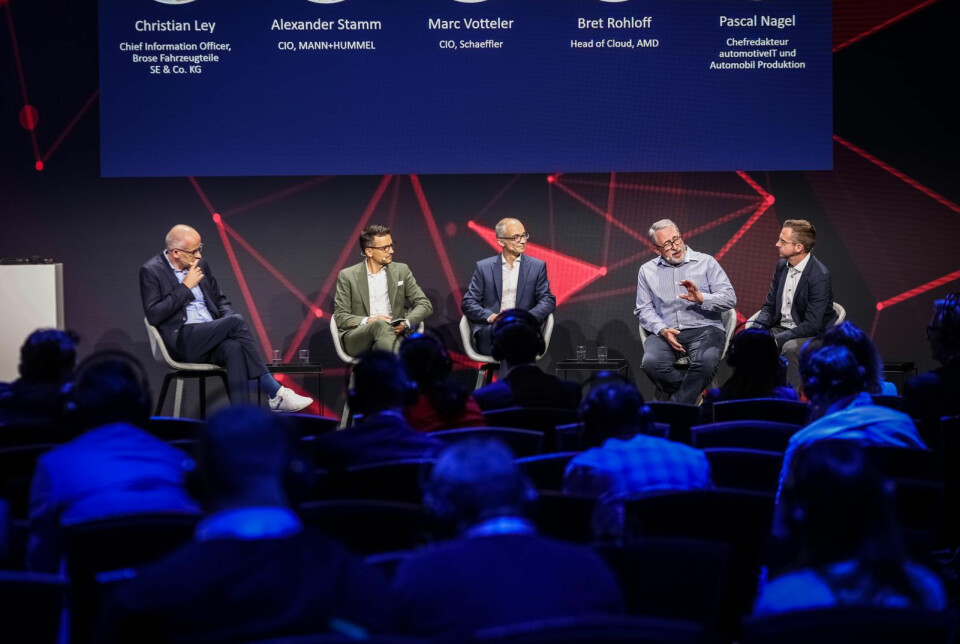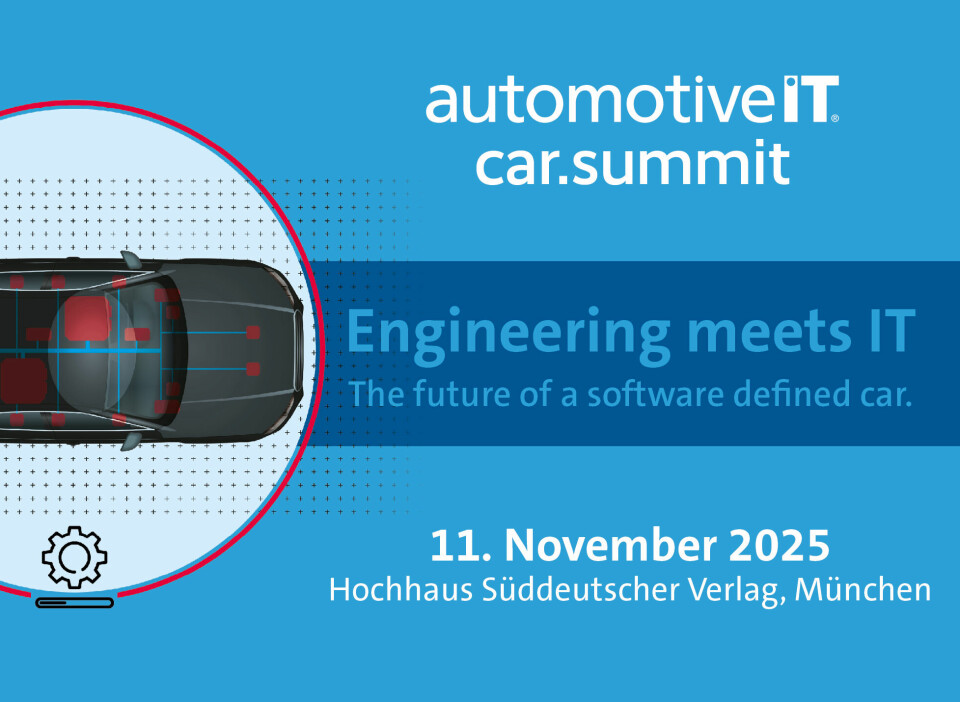Software Defined Vehicles
Architecture question
Smart cloud instead of cloud first

Cloud first is a thing of the past: The automotive industry is focusing on hybrid multicloud and agentic AI. Various IT experts explain how costs, governance, security, energy, and talent shape the architecture.
The automotive IT infrastructure is in a phase of readjustment. After years of unbridled cloud enthusiasm, strategic prudence is now coming to the fore. "Cloud is like a gym - everyone swears by it, but hardly anyone knows how to use it properly," says Alexander Stamm, CIO at Mann+Hummel, at the automotiveIT Congress 2025 in Berlin. His comparison hits the mark: the cloud has enormous potential but requires discipline, strategy, and an awareness of its limits.
For a long time, the path to the cloud was synonymous with modernity. Data centres were closed, applications migrated, data outsourced. But experience shows: the move is not a sure-fire success. "Cloud computing is a blessing for scaling - and a curse for dependency," says Stamm. In addition to elastic resources and global availability, issues have emerged that many have underestimated: data sovereignty, geopolitical risks, opaque cost models. Mann+Hummel is responding with a hybrid multi-cloud strategy. It aims to enable innovation without becoming dependent on a few hyperscalers. Around a quarter of the IT budget already flows into cloud services - controlled and targeted. "After cloud first comes cloud smart," emphasises Stamm. The focus is on cost-effectiveness, transparency, and governance.
Agentic AI as the next stage of cloud development
What 'smart' means is clarified by Lukas Winklmann, Vice President General Practice Management Germany at Kyndryl. For him, Agentic AI marks the next stage of development: moving away from rigid if-then automations towards systems that independently prepare decisions and execute steps based on data. Examples range from maintenance agents that link wear forecasts with availabilities, shift schedules, and inventories, to security agents that identify trends in rule violations and immediately initiate training. 'Humans remain in the loop,' Winklmann emphasises. Without traceability, auditability, and clear guidelines, Agentic AI cannot be scaled on an industrial scale. The technology is rarely the problem - the design of meaningful agents along real roles and processes is much more so.
In a panel discussion on IT infrastructure at the automotiveIT Congress, a broad consensus emerged: the target state is hybrid. 'The middle way is right for most,' says Bret Rohloff, Head of Cloud at AMD. Secure or very stable continuous loads are more likely to remain on-prem, while highly fluctuating workloads benefit from cloud elasticity. There is no definitive blueprint, the optimal mix will be customer-specific and will settle further in the coming years.

Marc Votteler, CIO of Schaeffler AG, confirms the path as a continuous journey. His first step years ago: elevate the on-prem landscape to cloud level - a software-defined data centre that allows fast shifting of workloads in both directions. “Cloud first, but not cloud only,” says Votteler. Christian Ley, CIO at Brose, adds the cultural dimension: at the beginning, there must be a clear “why”. Teams must be allowed to experiment as long as the direction is right. Mistakes are part of learning.
How companies are redefining their cloud boundaries
Concrete use cases show how assumptions are crumbling. Ley reports on highly critical MES installations that were considered untouchable for latency and availability reasons. A pilot with an outsourced database convinced. The application server remained on-prem, the data moved to the cloud - with fallback in minutes. The only hard boundary is customer or legal requirements. Votteler, meanwhile, advocates for pragmatism: systems that will be replaced in three years anyway do not need to be moved. A move just because it is possible is rarely worthwhile.
Costs remain an important touchstone. Rohloff points to the lessons from FinOps: load profiles, data outflows, and exit scenarios belong in every calculation. At the same time, technology is accelerating so rapidly that previous exclusion criteria quickly become outdated. “Testing is mandatory,” says Rohloff. Those who never try miss out on data dividends. Security, in turn, is less often a technical issue, more often a matter of preference and location. Confidential computing, complete encryption in operation and in motion - all this is available. In Europe, another factor is added: energy. AI drives demand upwards. “The question will be whether nations can supply enough energy to support the ambitions,” Rohloff points out.
The discussion also bridges the gap to organisational and talent issues. Infrastructure becomes code. "Our infrastructure is programmable today," notes Ley. This makes it fast and lean, replaces traditional documentation, and creates repeatability. At the same time, as Stamm admits, it is very difficult to turn experienced administrators into developers of infrastructure automation. Some thrive, others struggle. The transformation of the workforce becomes a competitive factor - especially in the battle for talent against larger, shinier brands.
Geopolitics forces flexibility
Geopolitics also remains a stress test for architectures. Votteler sees even more clarity compared to two years ago - mainly because local laws, for example in China, are now being applied more concretely. The bigger unknowns are short-term decrees in the USA. "You can hardly plan proactively for that," says Votteler. For Stamm, there is no way around scenario thinking. De-risking instead of radical decoupling, modularly designed backbones, variants in the drawer. "Ten years ago, new data protection rules might have taken up half a percent of my attention. Today it's ten to twenty," he says. Infrastructure is sluggish, investments are large. It is all the more important to trim architectural principles for flexibility.
The common thread of these voices: the industry has modernised the infrastructure. For the automotive industry as a whole, a clear trend is emerging, illustrating that the unreflective belief in the cloud is giving way to a phase of realism. Companies want to understand how cloud architectures can be designed sustainably and cost-effectively. It is no longer about the 'if', but about the 'how'.
This article was first published at automotiveit.eu


